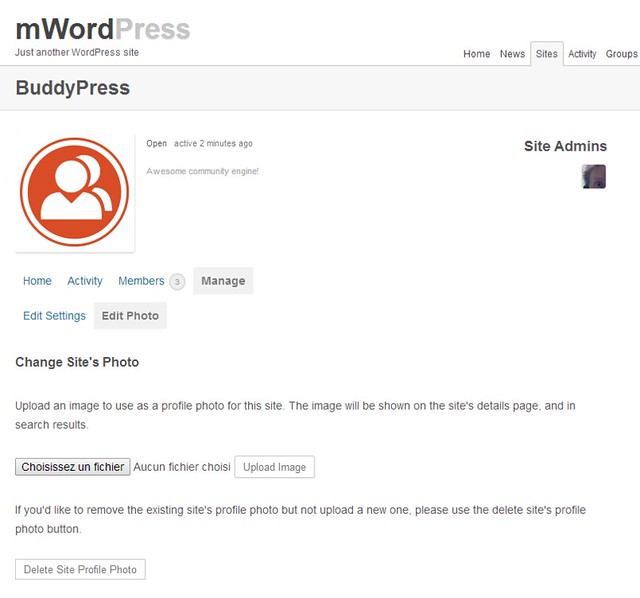User defined saved procedures are created by database builders or database directors. These SPs accommodates yet one more more SQL statements to decide out, update, or delete records from database tables. User defined stored procedure can take input parameters and return output parameters. User outlined saved procedure is mixture of DDL and DML instructions. For example, operations on an worker database could be coded as stored procedures executed by application code. Stored procedures could be compiled and executed with completely different parameters and results, and so they can have any combination of enter, output, and input/output parameters. Stored procedures are a user-defined list of pre-compiled SQL instructions which are retained and operated on-demand in a MySQL databank to execute a specific database process. This implies that it's possible to reuse the script all over again. A procedure does have a title, a set of parameters, and an announcement from SQL , such that the stored procedure can operate based on the value of the parameter transferred. The saved procedures should be executed by utilizing the CALL phrase. In this information, let's explore bit by bit the method of producing new stored procedures within the MySQL CREATE PROCEDURE clause. To view the list of the saved procedure, you presumably can question the information_schema.routines table. It contains the record of the saved procedure and stored features created on the database. To view the listing of the saved procedure created in a sakila database, run the next query. Moreover, it additionally provides the owner, created date, security sort, and SQL knowledge entry to the stored procedures. Such a task could involve execution of multiple queries for each task. This process might be eased if there was a method to group these tasks into a single task and execute it.
MySQL stored procedure is a pieced of pre-compiled SQL code which may be executed to run a quantity of tasks together with performing sure logical operations. A MySQL procedure is analogous to functions in a general programming language. This article covers the creation of MySQL procedures step-by-step using a sensible use-case state of affairs. A SQL stored procedure is a set SQL statements and sql command logic, which is compiled and saved on the database. Stored procedues in SQL allows us to create SQL queries to be stored and executed on the server. The main purpose of stored procedures to cover direct SQL queries from the code and improve efficiency of database operations similar to choose, update, and delete knowledge. Let's see how the procedure capabilities when it has been supplied with multiple parameters. Don't overlook to use the keyword 'DELIMITER' along with '&&' indicators. Use the CREATE PROCEDURE command to create a procedure 'New'. This procedure will be taking two arguments in its parameters e.g. 'var1' and 'var2'. The SELECT clause is once more fetching all the records from the desk 'record'. The first argument passed by a consumer will be matched to column 'Name' values. On the opposite hand, the second argument passed by a user will be matched to the column 'Country' values. If the information match, it's going to fetch all the info from consecutive rows. The procedure could be finished with the keyword 'END'. The exception is if the activate_all_roles_on_loginsystem variable is enabled, in which case MySQL Server sets all roles granted to the DEFINER consumer, together with necessary roles. Any privileges granted by way of roles are subsequently not checked by default when the CREATE PROCEDURE or CREATE FUNCTION assertion is issued.
For stored packages, if execution ought to happen with roles totally different from the default, this system body can execute SET ROLE to activate the required roles. This have to be done with warning for the reason that privileges assigned to roles may be modified. Conditional control—or "flow of control"—statements let you execute code primarily based on the value of some expression. As we stated earlier, an expression may be any combination of MySQL literals, variables, operators, and capabilities that returns a worth. It's high time to generate a procedure with a single parameter. The SELECT assertion is used to fetch all the data from the table 'record' where the column 'Name' has the identical value as in 'Var1'. End the stored procedure with the keyword 'END' adopted by '&&' signs. The database administrator grants apps privileges to call and entry solely specific stored procedures without giving them direct access to tables. Stored procedures help forestall script injection attacks since enter parameters are handled as values and never as executable code. For every OUT or INOUTparameter, cross a user-defined variable within the CALL assertion that invokes the procedure so as to get hold of its worth when the procedure returns. If you're calling the procedure from within another stored procedure or perform, you can even cross a routine parameter or local routine variable as an OUTor INOUT parameter. If you are calling the procedure from within a trigger, you can even move NEW.col_name as an OUT or INOUT parameter. The code accommodates a drop procedure statement to drop the procedure before recreating it. If you don't accomplish that, you'll encounter an error mentioning that the procedure already exists. Once you're done with the execution of the code, call the procedure once once more to view the results. The results would ought to that new entries have been added to the desk with increasing worth of main keys.
This method offers a simple method to convert a comma-separated itemizing of values to something that can be used in an IN clause within SQL Server Stored procedures. Two parameters are handed to the function, allowing other delimiters to be used if wanted. One may additionally use this for IN's of various information varieties, however a new perform can be wanted. I hope that this has helped someone remedy a dynamic query scenario. As at all times please present any feedback beneath and any inquiries to the discussion board. Above, we've outlined an IN saved procedure parameter prod_id. When we pass its argument in name statement, the saved procedure returns expected results. However, when you don't pass an argument, then it offers an error. Stored procedures simplify database management and cut back network site visitors. For example, issuing a question to the MySQL server processes the question and returns the outcomes. Using stored procedures saves the queries on the server so they can be executed later. Second, specify a listing of comma-separated parameters for the stored procedure in parentheses after the procedure name. Note that you'll discover ways to create saved procedures with parameters within the upcoming tutorials. Statements that return a result set can be used within a saved procedure however not within a saved operate. For statements that can be decided only at runtime to return a end result set, a PROCEDURE %s cannot return a end result set within the given context error occurs . Alters a beforehand defined stored operate that was created utilizing the CREATE FUNCTION statement.
It does not have an effect on associated stored procedures or saved features. Security could be another benefit of saved procedures. Applications can be granted execute privileges to the saved procedures, while being unable to entry the tables instantly. Unfortunately, presently, MySQL doesn't assist "GRANT EXECUTE". That means unless the applying has the authority to entry a desk, then calling a saved procedure that accesses the identical desk won't work either. It's a good bet that this feature is fairly excessive up on the "to do" list for a future release. Stored procedures permit most database access logic to be separated from the applying logic. One of the oblique advantages of utilizing stored procedures is that application code turns into smaller and simpler to grasp. Another advantage of stored procedures is that the SQL may be "pre-compiled" rising the speed of the appliance. Also, when implementing an n-tier application, stored procedures are used to separate the information layer from the server layer. The above code creates a function that may course of our input, converting each value to an integer and returning a single-column desk. Now, with a simple modification to the pattern question we are capable of successfully run the query as a part of a saved procedure. This includes creating an inventory of parameters, together with dynamically loaded lookup systems and more. Whenever you create a dynamic SQL statement based on parameters to a procedure or person inputs, you should always guard fastidiously against SQL injection .
SQL injection allows the consumer to offer fragments of SQL as parameters to your stored packages, probably subverting the ensuing dynamic SQL. First of all, comments have been added all through (preceded by --). This is extraordinarily essential as stored procedures improve in complexity. An additional parameter has been addedtaxable is a BOOLEAN . Within the stored procedure body, two native variables are defined using DECLARE statements. A saved procedure in MySQL acts as a way stored in the database. It has a name and accepts a set of arguments and could be invoked by way of CALL statement. In this submit we are going to look at how we can outline a saved procedure, how the parameters and variables work, and lastly how we will outline transactions and handle exceptions accordingly. In this article, we noticed how to create saved procedures in a SQL Server database for inserting, updating, and deleting records. The SHOW_SUPPLIERS saved procedure takes no arguments. You can specify arguments in a saved procedure by defining them within the method signature of your public static Java technique. Note that the strategy showSuppliers incorporates a parameter of sort ResultSet[]. If your stored procedure returns any number of ResultSet objects, specify one parameter of sort ResultSet[] in your Java technique. In addition, make positive that this Java methodology is public and static. Note that saved procedures are supported by most DBMSs, but there is a truthful quantity of variation in their syntax and capabilities. Onumber is defined as IN as a outcome of the order quantity is handed in to the stored procedure. Ototal is defined as OUT as a end result of the entire is to be returned from the stored procedure. The SELECT assertion used each of those parameters, the WHERE clause makes use of onumber to pick out the right rows, and INTO uses ototal to retailer the calculated complete.
Sometimes you might need to pass enter to saved procedure in MySQL. In this text, we'll take a look at how to create MySQL stored procedure with parameters and the several varieties of parameters supported in stored procedures. Beneath this Navigator bar, there are a set of different functions of MySQL. It includes a listing of databases, tables, stored procedures, and heaps of extra, as you'll be able to see from the image. MySQL Workbench GUI allows customers to alter a saved procedure where customers can add parameters or change the code. MySQL Workbench drops the present saved procedure and creates a brand new one after the changes have been made. The SHOW PROCEDURE STATUS statement returns a lengthy output. The statement displays the names and traits of stored procedures that you've entry to on the server. In this tutorial, you've realized how create saved procedures with parameters including IN, OUT, and INOUT parameters. The above syntax can be up to date and used in any procedure physique. The statements within the square braces are optionally available and may be averted if not required.
The query_statements part can accommodates single or multiple SQL situations to be executed if the search_condition evaluates to true. The above CASE…WHEN statement is converted into IF…ELSE within the code beneath. The above code creates a procedure that takes the worth of depend into a variable usercount and selects it to return the related value. As it can be noticed, the output of the primary query is not displayed as it is overshadowed by the query that follows. In a procedure, the output is always depending on the query that's executed on the end until a deliberate choose of a variable is executed in between. When you want to re-create the procedure, just like tables, you should drop the procedure before creating it again. In an alternate database like Oracle DB, there could be assist to create or substitute a procedure through the use of CREATE OR REPLACE as an alternative of the plain CREATE. However, in MySQL, it is mandatory to delete the procedure before you can re-create it. As we proceed within the tutorial, we would require to drop the procedure incessantly. The query to drop a procedure is just like the DROP question for MySQL tables.
A query to drop the procedure insertdefaultroles has been shown beneath. Make that past tense—the newest developer launch, MySQL 5.zero, does help saved procedures. If you're not acquainted with saved procedures, they're collections of SQL instructions and program logic stored on the database server. These saved procedures can then be invoked by application applications thus eliminating the need for programmers with varying degrees of ability to create their very own SQL. INOUT parameter is a mix of IN and OUT parameters. This implies that the calling program can move the argument and the stored procedure can change the INOUT parameter and return the model new value to the calling program. When you define IN parameter in a stored procedure, the calling program should pass an argument to the saved procedure. This means that even when the worth of the IN parameter is modified within the saved procedure, its unique value is maintained at the end of the stored procedure. In different words, the saved procedure works only on the copy of the IN parameter. However, Snowflake doesn't permit creating saved procedures with the same name as any of the system-defined functions. You can use SQL scripts to create saved procedures in Java DB. See the scriptjavadb/create-procedures.sql and the Ant target javadb-create-procedure in thebuild.xml Ant construct script.
An IN parameter is used to take a parameter as enter such as an attribute. When we define an IN parameter in a procedure, the calling program has to cross an argument to the stored procedure. In addition, the value of an IN parameter is protected. It implies that even if the value of the IN parameter is modified inside the procedure, its authentic value is retained after the procedure ends . In different words, the procedure solely works on the copy of the IN parameter. DECLARE requires that a variable name and datatype be specified, and likewise supports optionally available default values (taxrate on this instance is about to 6%). The SELECT has changed so the result's saved in total as a substitute of ototal. Then an IF statement checks to see if taxable is true, and whether it is, one other SELECT assertion is used to add the tax to local variable whole. And lastly, complete is saved to ototal using another SELECT statement. Productpricing is a very simple saved procedureit simply shows the results of a SELECT statement. Typically stored procedures don't display results; rather, they return them into variables that you just specify. CALL productpricing(); executes the just-created stored procedure and displays the returned outcome. As a saved procedure is definitely a sort of operate, () characters are required after the saved procedure name . MySQL doesn't permit any command to change the procedure in MySQL.

























































